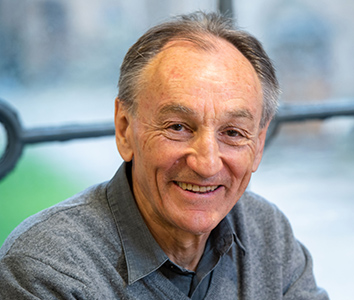While I'm away, the NBER Market Design meeting will convene at Stanford today and tomorrow. The first paper is presented by Alex Chan (who you could hire, he's on the market).
Market Design Working Group Meeting, Fall 2022 November 4-5, 2022 (US Pacific Time) (more papers are linked at the above link and all presentations
will be livestreamed on YouTube at https://www.youtube.com/nbervideos)
LOCATION Stanford University Graduate School of Business, Vidalakis Dining Hall, Schwab Residential Center, 680 Jane Stanford Way, Stanford, CA and YouTube
ORGANIZERS Eric Budish, Jakub Kastl, and Marzena Rostek
NBER conferences are by invitation. All participants are expected to comply with the NBER's Conference Code of Conduct.
Friday, November 4
Session 1. Matching Markets
9:00 am
Regulation of Organ Transplantation and Procurement: A Market Design Lab Experiment by Alex Chan, Stanford University and Alvin E. Roth, Stanford University and NBER
Measuring the Welfare Gains from Cardinal-Preference Mechanisms in School Choice(slides) by Hulya Eraslan, Rice University and NBER by Jeremy T. Fox, Rice University and NBER, YingHua He, Rice University, Yakym Pirozhenko, Rice University
10:20 am Coffee Break
Session 2. Markets and Algorithms
11:00 am Market Opacity and Fragility by Giovanni Cespa, City University London, Xavier Vives, IESE Business School
Artificial Intelligence and Pricing: The Impact of Algorithm Design by John Asker, University of California, Los Angeles and NBER Chaim Fershtman, Tel Aviv University, Ariel Pakes, Harvard University and NBER
12:20 pm Lunch - Vidalakis Courtyard
Session 3: Young Scholars Session I: Financial Market Design
2:00 pm Intermediary Asset Pricing: Capital Constraints and Market Power(slides), Jason Allen, Bank of Canada, Milena Wittwer, Boston College
Endogenous Market Structure: Over-the-Counter versus Exchange Trading by Ji Hee Yoon, University College London
3:20 pm Coffee Break
Session 4: Young Scholars Session II: Market Design Theory
4:00 pm Strategyproofness-Exposing Mechanism Descriptions, by Yannai A. Gonczarowski, Harvard University, Ori Heffetz, Cornell University and NBER, and Clayton Thomas, Princeton University
Matching and Prices by Ravi Jagadeesan, Stanford University, Alexander Teytelboym, University of Oxford
Saturday, November 5
Session 5. Non-Market Allocation Mechanisms
9:00 am Optimal Queue Design by Yeon-Koo Che, Columbia University, Olivier Tercieux, Paris School of Economics
Fraud-proof Non-market Allocation Mechanisms by Eduardo Perez-Richet, Sciences Po, Vasiliki Skreta, UT Austin & UCL
10:20 am Coffee Break
Session 6. Environment and Transportation
11:00 am Pollution Permits: Efficiency by Design by Marek Pycia, University of Zurich, Kyle Woodward, University of North Carolina
Optimal Urban Transportation Policy: Evidence from Chicago(slides) by Milena Almagro, University of Chicago, Felipe Barbieri, University of Pennsylvania, Juan Camilo Castillo, University of Pennsylvania, Nathaniel G. Hickok, Massachusetts Institute of Technology, Tobias Salz, Massachusetts Institute of Technology and NBER
12:20 pm Lunch - Vidalakis Courtyard
Session 7. Auctions and Mechanism Design
This session: 25 minutes presenter, 5 minutes Q&A.
1:30 pm Screening with Persuasion by Dirk Bergemann, Yale University, , Tibor Heumann, PUC Chile, Stephen Morris, Massachusetts Institute of Technology
Auctions with Frictions by Stephan Lauermann, University of Bonn, Asher Wolinsky, Northwestern University
Pure-Strategy Equilibrium in the Generalized First-Price Auction, by Michael Ostrovsky, Stanford University and NBER, Andrzej Skrzypacz, Stanford University




